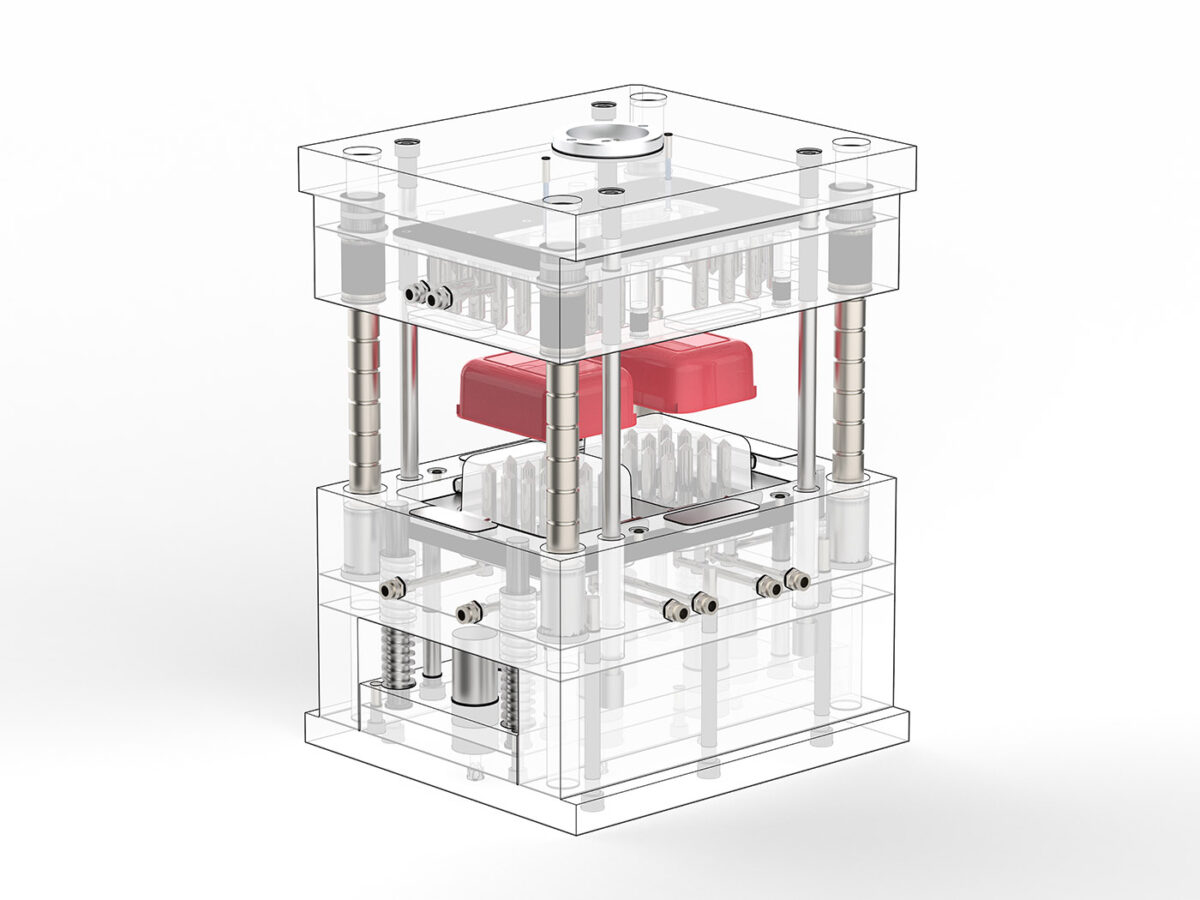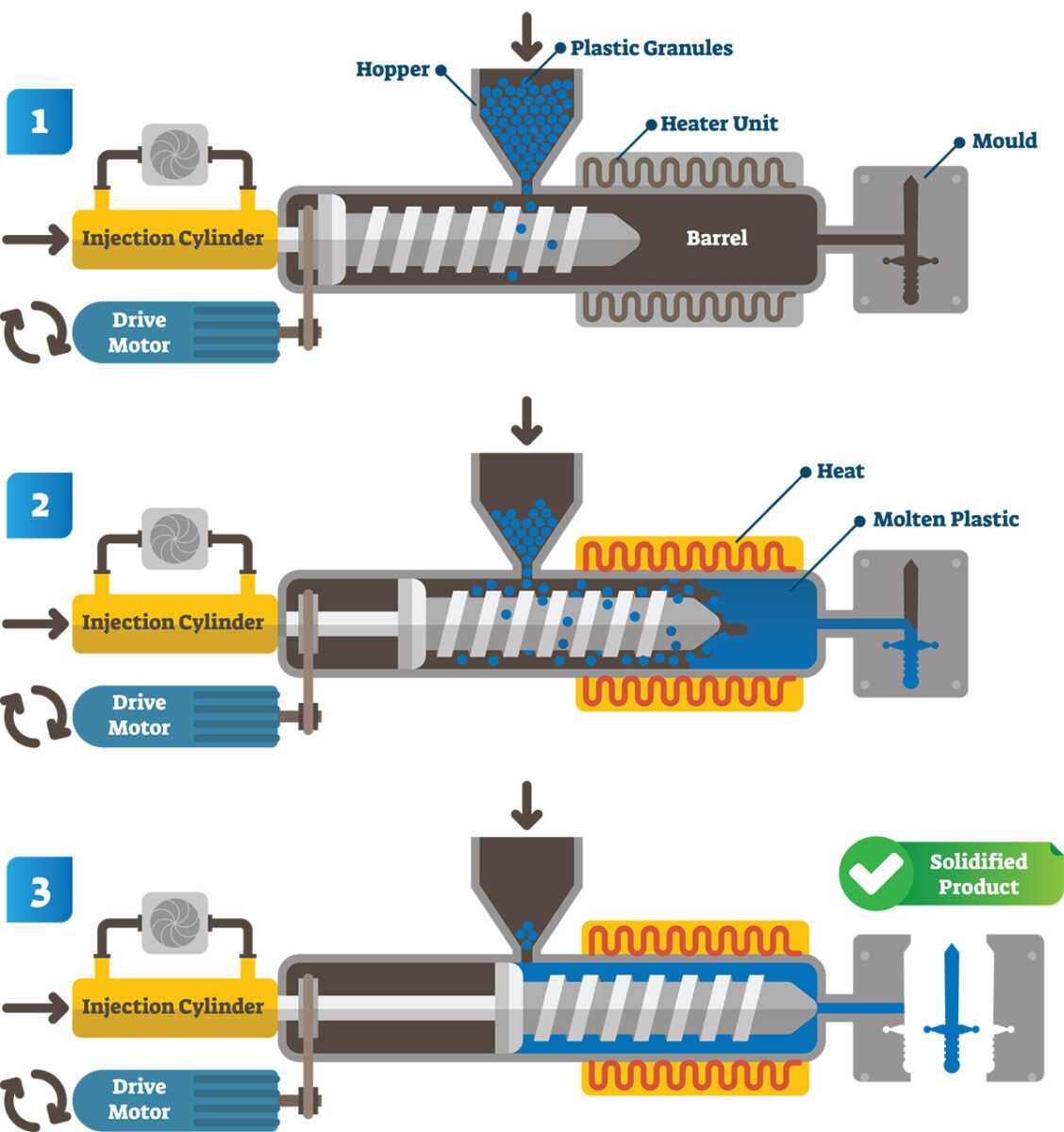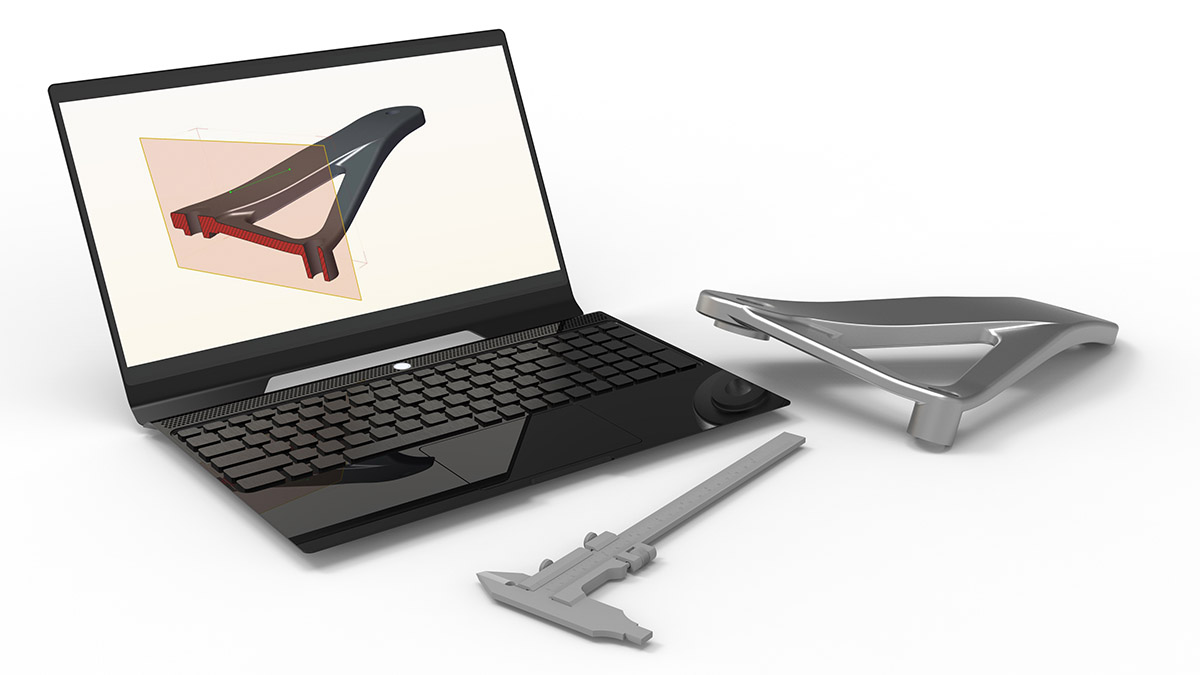Plastics Injection Molding: Definition, Benefits and Applications

Plastics Injection molding accounts for nearly 50% of all plastic processing methods. Compared to other processes like blow molding or thermoforming, it is preferred for its ability to produce complex parts with high repeatability and minimal waste.
In the ever-evolving world of manufacturing, injection molding (IM) stands out as a revolutionary process. From producing everyday household items to intricate components for advanced industries, this method offers unparalleled efficiency and precision. As of recent market analysis, the global IM market was valued at approximately $270 billion in 2023, and it is projected to reach $357 billion by 2027.
You can also read: Maximizing Injection Molding Simulation, AI and Injection Molding: Bridging the Gap through Research
Understanding Plastics Injection Molding
The innovative manufacturing process enables to produce parts by injecting molten material into a mold. It is one of the most common methods for mass-producing plastic products. The process involves several key steps from Pellets to Finished Parts:

Full cycle scheme with manufacturing steps of plastics injection molding process. Labeled injection cylinder, drive motor, hopper, plastic granules and plastic part.
- Feeding: Plastic pellets are poured into a hopper.
- Melting: After that, the pellets are conveyed into a heated barrel-screw system, where they are melted by both heat and friction.
- Filling: Consequently, the molten plastic is injected into the mold cavity through a nozzle.
- Cooling: During the time the mold is closed and the filling is finished, the plastic cools and solidifies within the mold, forming the desired part shape.
- Ejection: Finally, the mold opens, and ejector pins push the finished part out of the mold
Read also: Sandwich Injection Molding to Increase Recycled Plastic Content
Key Components of Injection Molding
- Machine: This is the primary equipment that melts the plastic and injects it into the mold. It consists of a hopper, barrel, screw, and clamping unit.
- Mold: The mold is a custom-designed tool that shapes the molten plastic into the final product. It consists of two halves: the cavity (female) and the core (male).
- Material: Thermoplastics, elastomers, LSR and thermosetting resins are the most common materials. The choice depends on the application and the project requirements. PE already published innovative alternatives to get effectiveness for this topic: Direct Compounding Injection Molding: Cost-Efficient Expertise
- Part Design: The design of the part must consider factors like uniform wall thickness, material flow, and cooling time to ensure high quality and feasibility.

Invest the right time during the development phase can be the difference between profit and unsuccessful projects.
- Process: Control critical variables such as injection pressure, temperature, and cooling time, allows to produce consistent and high-quality parts.
Advantages and Disadvantages
Understanding the pros and cons, helps in evaluating its suitability for different applications.
| Advantages | Disadvantages |
| High Efficiency and Production Speed | High initial tooling and machine costs |
| Ability to Produce Complex Designs | Long lead times for mold design and manufacturing |
| Material Versatility | Part design restrictions due to the need for uniform wall thickness |
| Cost-Effective for Large Production Runs | Not economically viable for small production runs due to setup costs |
| Minimal Waste Production | Potential for defects such as warping, sink marks, and surface defects |
| Consistent Quality and Precision | Requires careful control of process parameters to maintain quality |
Applications
The versatility of IM extends across various industries, including:
- Automotive: Manufacturing of dashboards, bumpers, and other interior and exterior components.
- Medical: Production of medical devices, syringes, and surgical instruments.
- Consumer Goods: Creation of everyday items like toys, kitchenware, and packaging products.
- Electronics: Production of housings for electronic devices, connectors, and various small components.
- Industrial: Fabrication of parts used in machinery and industrial equipment.
Latest Trends
This industry is continuously evolving with advancements that enhance the process and its outcomes:
- Sustainable Materials and Processes: There is a growing emphasis on using biodegradable and recycled plastics to reduce environmental impact. Innovations in bio-based polymers are becoming more prevalent, aligning with global sustainability goals.
- 3D Printing for Rapid Prototyping and Tooling: 3D printing allows to create prototype molds and tooling inserts, significantly reducing development time and cost. This allows for faster iterations and more flexibility in design modifications.
- Process Automation and IoT Integration: Automation and the Internet of Things (IoT) integrates into injection molding machines monitoring and process control in real-time. This enhances efficiency, reduces downtime, and improves product quality through precise control of process parameters.
- Advanced Simulation and Modeling Software: New software tools are enabling better simulation and modeling of the injection molding process. These tools help predict potential issues, optimize mold design, and improve overall process efficiency.
- Micro Injection Molding: This involves the production of extremely small parts with high precision, often used in medical and electronic applications. Advances in micro molding technologies are pushing the boundaries of miniaturization and accuracy.
- Smart Manufacturing and Industry 4.0: The adoption of smart manufacturing techniques, including the use of artificial intelligence (AI) and machine learning, is revolutionizing injection molding. These technologies provide insights for predictive maintenance, process optimization, and quality control, leading to more efficient and reliable production.
The Vision
Now you can realize that this field is still a cornerstone of modern manufacturing, offering efficiency, versatility, and precision. Its ability to produce complex designs and accommodate a wide range of materials makes it indispensable across various industries. As technology advances, the process continues to evolve, promising even greater capabilities and applications in the future. BCC Research LLC Pegs Global Injection Molding Market Growth at 6.2% per year to 2026
By understanding the intricacies of plastics injection molding and staying updated with the latest trends, manufacturers can better leverage this powerful method to innovate and optimize their production processes. Whether you’re in the automotive, medical, consumer goods, electronics, or industrial sector, IM is a key technology that can drive success and efficiency in your manufacturing operations.
To read more: Injection Molding Market Size, Share & Trends Report, 2030
